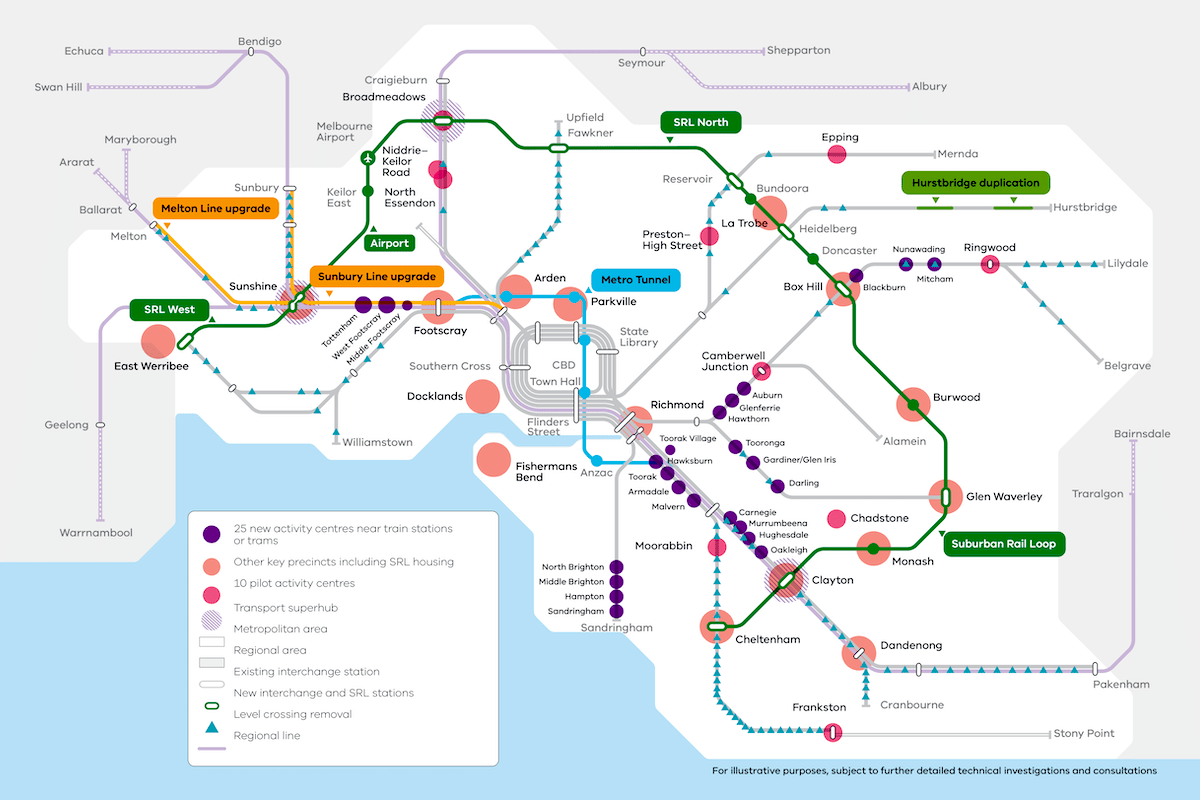The state government will expand its activity centre housing program and has identified another 25 precincts for denser development around railway stations.
These new compact communities will result in a switch towards more public and active transport use and will deliver convenient and stress-free bike networks in and through the redeveloped neighbourhoods.
The centres are along what the government describes as “train and tram zones”. Another 25 zones will be announced later this year.
These are in addition to the first 10 activity centres previously announced and the parallel developments to emerge around the new suburban rail loop station precincts.
The government says that consultation on the first 10 centres has revealed strong support for the clustering of the developments around public transport nodes.
Although some local councils have expressed shock at the pace of the move and focus on increased density around stations, the thrust of the policy dates back to Plan Melbourne in 2013.
These plans have been updated and revised five times since, including the explicit 2017 Plan Melbourne update and subsequent heavy investment in rail and tram upgrades.

Seven centres are connected to the new Metro Tunnel – Carnegie, Hughesdale, Murrumbeena, Oakleigh, Middle Footscray, West Footscray and Tottenham stations.
There are six centres along the Belgrave/Lilydale line (and the existing Camberwell and Ringwood activity centres): Hawthorn, Glenferrie, Auburn, Blackburn, Nunawading and Mitcham Stations.
On the Frankston line four centres are located at Toorak, Hawksburn, Armadale and Malvern stations.
On the Sandringham line four centres are located at North Brighton, Middle Brighton, Hampton and Sandringham stations.
On the Glen Waverley line centres are at Tooronga Station and Darling Station, plus a combined centre covering both Gardiner and Glen Iris stations.
Toorak Village is a built-up area along the Route 58 tram. This centre, plus Middle Footscray, are classified as smaller “neighbourhood activity centres” to plan for more modest growth.
The statement by Premier Jacinta Allen says that overall, the vision for train and tram zones is for taller buildings in the immediate station cores, with gentler, scaled height limits and more low-rise apartments and townhouses alongside existing houses in the surrounding walkable catchments.
In these catchment areas, up to 800 metres from the station, the rights of residents to have their say and appeal will not change through this program. Heritage and landscape overlays will remain and design will be undertaken in consultation with locals, the statement says.
COMMENT:
Media coverage of the proposals have overlooked some of the key issues that will be well known to active and public transport advocates.
Because the new housing will be built where public transport is highly attractive, it will require few car spaces (and more bike parking) and will be appreciably cheaper to build.
The neighbourhoods will be built according to movement and place policies with attractive low-traffic streets and plenty of opportunities for taking a bike trip or walking.
Residents will not have to drive hours every day for work, and congestion will be reduced for those who must drive.
And with all the extra physical activity opportunities, combined with much less sedentary time spent driving, healthier lives will result.
And while some councils might resent having their precious power to block denser living curtailed, they are none-the-less licking their lips at the prospect of the increased rate revenue from all these new properties that will be springing up in their municipalities.
Or become our friend and subscribe to receive our fortnightly newsletter.


